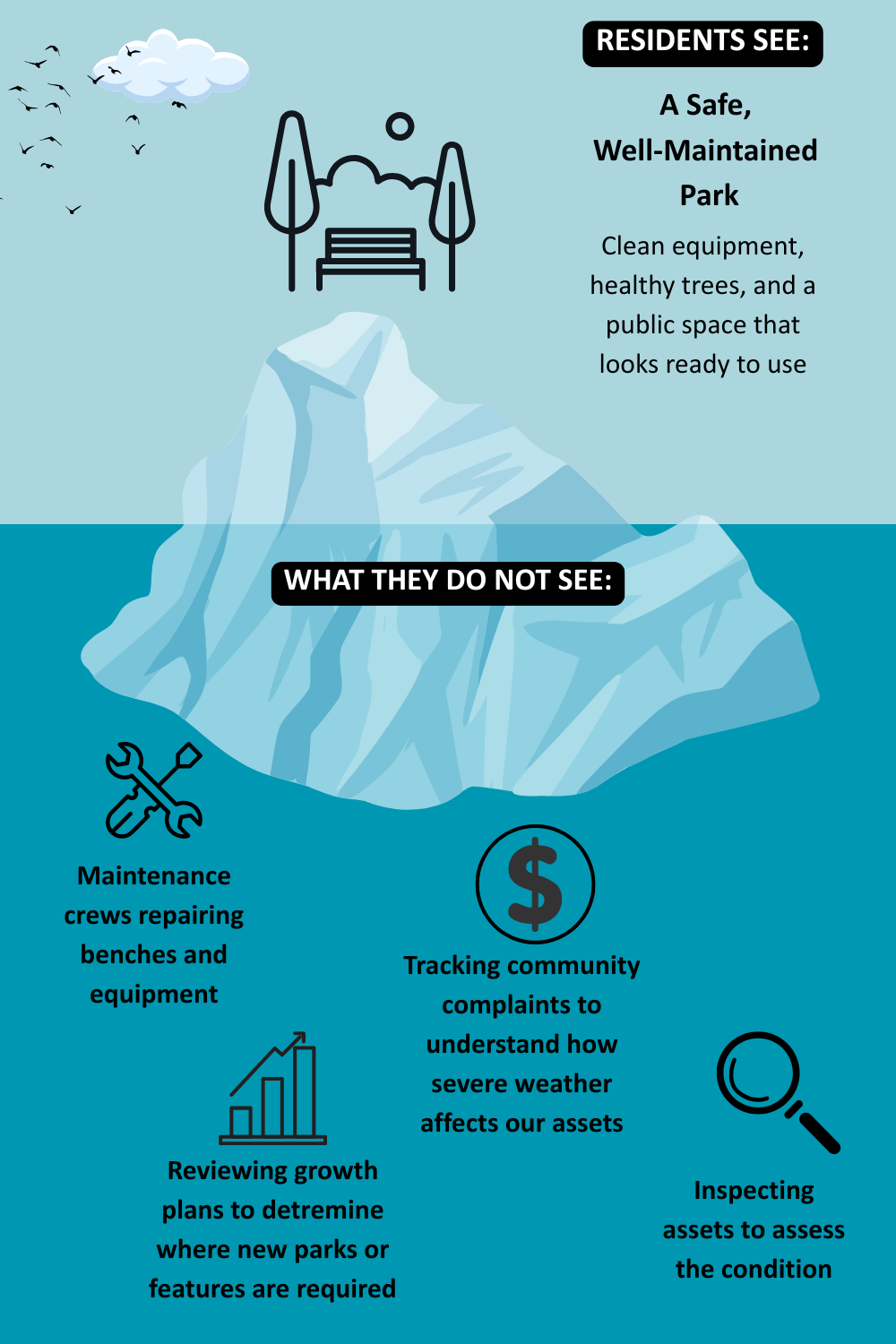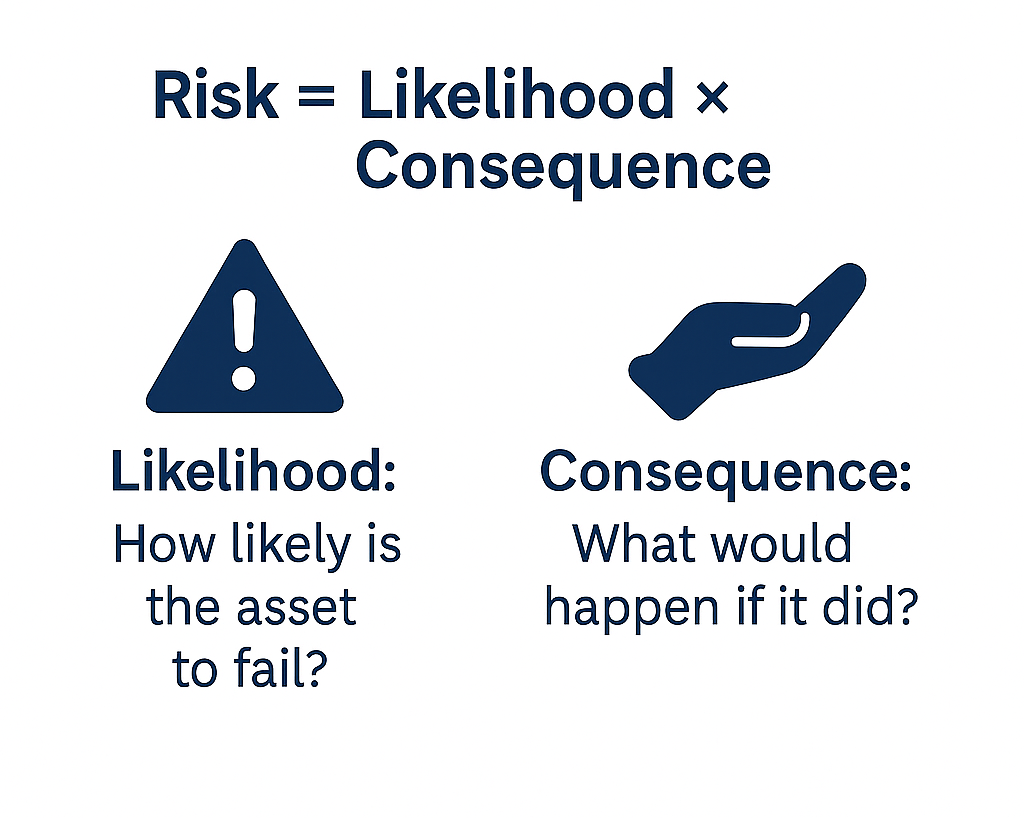Knowing what we own and what it's worth
We maintain an inventory of over 660,000 municipal assets worth billions of dollars. For each asset, we record its type, location, age, and replacement value to support planning and investment decisions.
Asset Management is a strategic and ongoing process that helps municipalities maintain and invest in infrastructure to ensure reliable and sustainable service delivery. This includes everything from roads, bridges, and stormwater systems to public buildings, parks, fleet, and facilities.
The goal is to manage these assets efficiently. We track their condition, performance, and financial needs over time to make the most of every tax dollar and reduce unexpected costs. Asset Management helps us make informed decisions about when to repair, upgrade, or replace infrastructure based on risk, lifecycle costs, and community priorities.
This ensures that our services remain safe, affordable, and resilient—today and for future generations.
Under the Infrastructure for Jobs and Prosperity Act, 2015, the Province of Ontario requires municipalities to follow O. Reg. 588/17: Asset Management Planning for Municipal Infrastructure. This regulation sets phased deadlines for improving asset planning.
Key Requirements:
We have completed AMPs that include assets within all service areas. Our AMPs present the assets we own, current condition, performance, and funding needs.
They also outline how assets are maintained, used, and funded throughout their lifecycles. Our AMPs provide a roadmap for future infrastructure spending within the City of Kingston. They guide long-term investment decisions and improve the reliability of municipal services.
| Plan | Focus | Replacement value | Key insights |
| Core AMP (2022) | Roads, bridges, large diameter culverts, and stormwater infrastructure | $5.6 billion | 66% of our core assets are in fair or better condition |
| Facilities AMP (2023) | 147 buildings and structures | $1.3 billion | 79% of our facilities are in fair or good condition |
| 2024 AMP | 21 additional service areas including parks, IT, fleet, transit, and traffic control | $1.6 billion | 34% of all other assets in good or very good condition |
| 2025 Natural Asset Management Plan | Woodlands, forests, plantations, marshes, swamps etc. | $1.8 billion |
Knowing what we own and what it's worth
We maintain an inventory of over 660,000 municipal assets worth billions of dollars. For each asset, we record its type, location, age, and replacement value to support planning and investment decisions.
Understanding the current state and risks
We monitor asset condition using inspections, age-based estimates, and performance data. This helps identify maintenance needs and avoid unexpected failures.

Defining what residents expect — and how assets perform
Levels of Service (LOS) measure how well our assets perform. We compare the services we provide to what the assets deployed can actually deliver.

For example, residents see a well-maintained park.
What they don't see:
Determining when to repair, renew, or replace
We plan across an asset’s full lifecycle to ensure optimal performance, reduce costs, and extend service life.

An asset lifecycle includes:
Prioritizing investments to minimize failure and service disruption

We identify the most at-risk assets to allocate funding where it matters most— on service delivery and public safety.
Risk = Likelihood x Consequences
Likelihood: How likely is an asset to fail?
Consequences: What would happen if it did fail
For example:
Budgeting for today and the future
Our Asset Management Plan supports responsible long-term financial planning. It forecasts future repair and replacement needs, and aligns asset renewal with available funding.
Asset planning helps us deliver reliable, sustainable services while adapting to growth, aging infrastructure, and climate change impacts.
Review the following documents to learn more about our Asset Management Policy and Plan.
Utilities Kingston manages and maintains our gas, municipal water, and waste water assets. For more information, visit Utilities Kingston Asset Management Plan and review the Natural Gas Utility Asset Management Plan.
Assets are everything we own. These assets make up our diverse portfolio of infrastructure that delivers municipal services.
A park may contain playground equipment, splash pads, pathways, and benches, all of which we are responsible for maintaining.
Check out our "What is an Asset" video on Instagram.
What are the costs throughout the asset lifecycle?
When we build a new facility or buy a vehicle, the initial cost is only one part of the total expense.
In fact, 80% or more of an asset’s total cost comes from operating, maintaining, and renewing it over time — not from building or acquiring it. Only 20% of the total cost is attributed to its engineering and construction.

This is why lifecycle costing is so important. It allows us to:
We own assets used to support diverse municipal services and departments.
Assets associated with existing water, wastewater, and gas services fall under the responsibility of Utilities Kingston and are not included in any of our Asset Management Plans.
Why is Asset Management important?
By implementing Asset Management, we ensure:
As part of our commitment to transparency and continuous improvement, we recently conducted a public engagement campaign to better understand community values and expectations around infrastructure and service delivery.
Visit Get Involved Kingston to learn about the 2025 Public Engagement results.
These insights will help inform:
Our Asset Management work is led by the AM department, but since assets touch all departments, it's a collaborative effort. Plan development involves the AMP Steering Committee which comprises senior management staff from multiple departments, including:
Contact Us
City of Kingston
City Hall
216 Ontario Street
Kingston, ON K7L 2Z3
Canada
contactus@cityofkingston.ca
Phone: 613-546-0000

The City of Kingston acknowledges that we are on the traditional homeland of the Anishinabek, Haudenosaunee, and the Huron-Wendat, and thanks these nations for their care and stewardship over this shared land.
Today, the City is committed to working with Indigenous peoples and all residents to pursue a united path of reconciliation.
Learn more about the City's reconciliation initiatives.